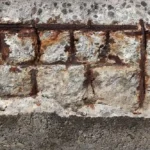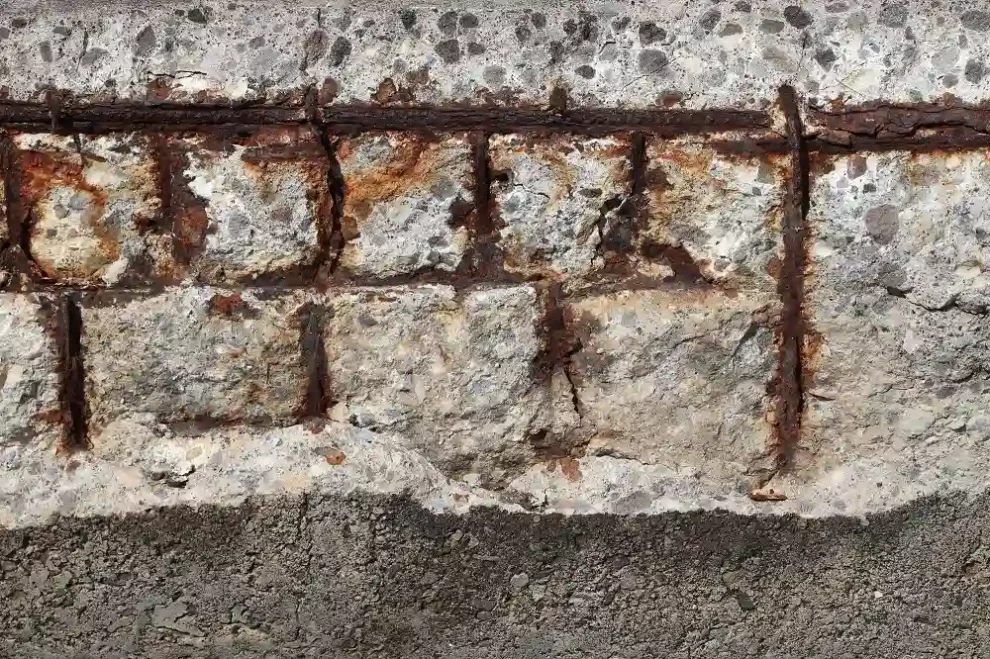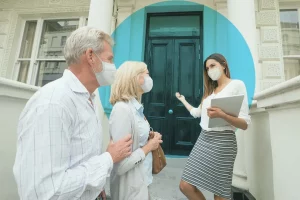Concrete spalling is a challenge faced by many in the construction industry across Australia. Whether you’re managing a large commercial project or handling residential repairs, understanding the causes, implications, and solutions for spalling is essential.
Whether you are new to the industry or a seasoned professional, the insights shared here should empower you to tackle spalling issues head-on. With a blend of technical know-how, practical experience, and a commitment to excellence, you can make a lasting impact on the quality and longevity of the structures you build and repair. Cheers to building a future where every repair contributes to a safer, stronger, and more sustainable infrastructure across Australia.
Understanding Concrete Spalling
Concrete spalling refers to the flaking or breaking away of the concrete surface. This degradation is usually caused by a combination of factors such as environmental exposure, mechanical wear, and chemical reactions. In Australia’s varied climate—from the humid tropics of the north to the colder regions in the south—concrete structures are particularly vulnerable to weathering and the freeze-thaw cycle.
Causes of Spalling
There are several primary reasons for spalling in concrete structures:
- Corrosion of Reinforcement: When the steel reinforcement within the concrete begins to corrode, it expands and creates internal pressure. This pressure eventually leads to cracking and the spalling of the concrete cover.
- Freeze-Thaw Cycles: In regions where temperatures drop below freezing, water can seep into the concrete. When this water freezes, it expands, causing stress within the structure.
- Poor Construction Practices: Inadequate compaction, improper curing, or the use of low-quality materials can result in a weaker concrete matrix, making it more susceptible to spalling.
- Chemical Attack: Exposure to de-icing salts or other corrosive substances accelerates deterioration by initiating chemical reactions that weaken the bond between the cement paste and the aggregate.
- Abrasion and Impact: In industrial settings or heavily trafficked areas, constant mechanical wear can cause surface degradation, leading to spalling over time.
Understanding these causes is critical in diagnosing the problem and applying the correct repair strategy.
Diagnosing Spalling in the Field
Before commencing any repair work, a thorough inspection is necessary. Identifying the extent and root cause of the spalling is a crucial step:
- Visual Inspection: Look for signs of flaking, cracking, and exposure of reinforcement. Pay close attention to areas that are frequently exposed to moisture or de-icing salts.
- Non-Destructive Testing (NDT): Techniques such as ultrasonic pulse velocity and rebound hammer tests can help assess the integrity of the concrete and identify areas of potential weakness.
- Core Sampling: In some cases, it might be necessary to take core samples to examine the internal condition of the concrete. This can reveal the extent of reinforcement corrosion and the condition of the concrete mix.
A careful assessment not only determines the severity of the spalling, but also guides the choice of repair method.
Preparing for Repair Work
Proper preparation is key to ensuring a long-lasting repair. Here are the essential steps:
Safety First
- Personal Protective Equipment (PPE): Ensure that all personnel wear appropriate PPE, including eye protection, gloves, and dust masks.
- Site Safety: Barricade the repair area to protect passers-by and prevent accidental injuries. Use clear signage to alert workers and the public about the ongoing repair work.
Cleaning and Surface Preparation
- Remove Loose Material: Use tools like chipping hammers or high-pressure water jets to remove loose or deteriorated concrete. Mechanical methods should be applied carefully to avoid causing further damage to the surrounding structure.
- Clean the Surface: After removing the loose material, clean the surface thoroughly. This involves removing dust, debris, and any contaminants that might interfere with the bonding of repair materials.
- Drying: Ensure that the surface is dry. Moisture trapped within the substrate can compromise the adhesion of repair materials. In wet conditions, consider using dehumidifiers or heaters to speed up the drying process.
Evaluating Repair Materials
Choosing the right repair material is critical. The two main types are:
- Cementitious Repair Mortars: These are widely used for their ease of application and compatibility with existing concrete. They are often modified with polymers to enhance bonding and durability.
- Epoxy-Based Repairs: For areas requiring high strength and chemical resistance, epoxy repair systems provide an excellent solution. They are particularly useful in industrial environments or where heavy loads are expected.
Techniques for Effective Spalling Repair
There are several techniques available, each suitable for different scenarios. Here, we explore the most commonly used methods.
1. Surface Preparation and Patching
For minor spalling, the repair often involves patching the surface:
- Step 1: Roughening the Surface
Roughening the surface is essential to provide a good key for the repair material. This can be done with a chipping hammer, wire brush, or shot blasting. - Step 2: Applying a Bonding Agent
A bonding agent is applied to the cleaned and roughened surface. This improves the adhesion between the existing concrete and the new patch material. - Step 3: Applying the Repair Mortar
The repair mortar, which may be polymer-modified, is mixed according to the manufacturer’s instructions. It is then trowelled onto the prepared area, ensuring that it fills all voids and adheres well to the existing concrete. - Step 4: Finishing and Curing
The repaired area is smoothed to match the surrounding surface. Proper curing is essential; covering the repair with a curing compound or plastic sheeting can help retain moisture and allow the mortar to cure slowly, which improves strength and durability.
2. Structural Repairs
When spalling affects the structural integrity of a concrete element, a more robust approach is necessary:
- Step 1: Removal of Deteriorated Concrete
In severe cases, the damaged concrete must be completely removed. This may involve cutting out sections of the structure using concrete saws. - Step 2: Reinforcement Inspection and Repair
Exposed reinforcement should be inspected for corrosion. Any corroded bars may need to be cleaned, treated with corrosion inhibitors, or even replaced. - Step 3: Application of High-Strength Repair Mortar
A high-strength, fibre-reinforced repair mortar is applied to replace the removed section. The inclusion of fibres helps reduce the risk of future cracking and improves the overall durability of the repair. - Step 4: Post-Repair Treatment
Post-repair, it is advisable to apply a protective coating or sealer to prevent moisture ingress and chemical attack, extending the life of the repair.
3. Shotcrete and Spray Applications
For large areas or surfaces with complex geometries, shotcrete applications can be highly effective:
- Step 1: Surface Preparation
Similar to other methods, the first step is to clean and roughen the existing surface. - Step 2: Mixing the Shotcrete
Shotcrete is typically a high-velocity mix of cement, aggregates, and water, often with added admixtures to improve workability and adhesion. The mix can be delivered using either dry-mix or wet-mix methods. - Step 3: Application
The shotcrete is sprayed onto the surface using specialised equipment. Skilled operators are essential to ensure that the material is applied evenly and compacted properly. - Step 4: Finishing
Once the shotcrete is applied, it is finished with a trowel or brush to achieve the desired texture. Adequate curing is, once again, critical to prevent early-age cracking and ensure long-term durability.
Best Practices in Concrete Spalling Repair
Quality Control and Assurance
Quality control is a non-negotiable aspect of concrete repair work. Here are some key practices:
- Testing and Inspection: Regular testing of materials and finished repairs is essential. Non-destructive testing methods, such as ultrasonic testing, can provide insights into the integrity of the repair.
- Documentation: Keep detailed records of the materials used, environmental conditions, and repair procedures. This documentation is invaluable for future maintenance and warranty claims.
- Adherence to Standards: Ensure that all repair work complies with Australian standards such as AS 3600 (Concrete Structures) and AS 1379 (Specification and Supply of Concrete). These standards provide guidelines on material quality, application methods, and curing practices.
Environmental Considerations
Given the harsh Australian climate, consider the following:
- Local Climate Conditions: Adapt repair techniques to the local environment. For example, in coastal areas where salt exposure is significant, consider using sulphate-resistant cement and corrosion inhibitors.
- Sustainability: Use eco-friendly materials and techniques wherever possible. Advances in technology have led to the development of more sustainable repair mortars and additives that reduce the carbon footprint of repair work.
- Long-Term Maintenance: A proactive approach to maintenance can significantly extend the life of concrete structures. Regular inspections and timely repairs are key to preventing minor issues from developing into major structural concerns.
The Role of Technology
Modern technology has revolutionised the way concrete spalling is repaired. Some advancements include:
- Digital Inspection Tools: High-resolution imaging, drones, and 3D scanning are increasingly used to identify spalling early and map the extent of damage.
- Advanced Materials: New repair materials, such as polymer-modified mortars and fibre-reinforced concretes, offer improved performance, especially in harsh environments.
- Simulation Software: Finite element analysis (FEA) and other simulation tools help engineers predict how repaired structures will behave under load, ensuring that repairs meet the required performance criteria.
Case Studies from the Field
Examining real-world examples helps illustrate the principles and practices discussed. Consider the following case studies:
Case Study 1: Residential Garage Repair
A suburban home in Melbourne experienced spalling on the concrete garage floor due to water ingress and thermal cycling. The repair process involved:
- Thorough cleaning and removal of loose material.
- Application of a polymer-modified repair mortar.
- Use of a curing compound to ensure even hydration.
- Post-repair sealing to prevent future moisture ingress.
The result was a durable repair that restored the floor’s structural integrity and appearance, withstanding subsequent freeze-thaw cycles.
Case Study 2: Commercial Building Façade
A commercial building in Brisbane suffered from spalling on its façade due to prolonged exposure to coastal salt and pollution. The repair strategy included:
- Removal of deteriorated concrete and careful inspection of the underlying reinforcement.
- Application of a high-strength, fibre-reinforced repair mortar.
- Use of shotcrete to address complex geometry and large surface areas.
- A final application of a protective sealer to shield against further chemical attack.
This comprehensive approach not only repaired the damage but also improved the building’s overall durability and aesthetic appeal.
Preventative Measures to Minimise Future Spalling
While repairs are essential, prevention is even better. Here are some strategies to minimise the risk of future spalling:
- Proper Design and Material Selection: Use high-quality, durable materials and design elements that account for environmental exposure. Consider incorporating corrosion inhibitors and water-repellent additives in the concrete mix.
- Regular Maintenance and Inspections: Schedule periodic inspections, particularly in high-risk areas. Early detection of minor cracks or surface deterioration can prevent extensive spalling.
- Environmental Controls: In areas prone to extreme weather, implement measures such as drainage improvements and protective coatings. These can help manage water ingress and reduce the impact of freeze-thaw cycles.
- Training and Education: Ensure that all construction personnel are adequately trained in best practices for concrete repair and maintenance. Knowledge sharing and continuous professional development are crucial for staying ahead of emerging challenges.
Concrete Spalling Repair
Concrete spalling repair is a vital skill for construction professionals working across Australia. With the country’s diverse climate and exposure to various environmental challenges, a proactive and technically sound approach to spalling repair is essential for both safety and longevity. By understanding the causes of spalling, properly diagnosing the issue, and applying the appropriate repair techniques, you can ensure that structures remain sound and visually appealing for years to come.
As a construction pro, your expertise in selecting the right materials, adhering to industry standards, and employing advanced repair techniques is paramount. Whether it’s a minor patch repair or a large-scale structural fix, the principles outlined in this guide serve as a foundation for tackling spalling issues effectively.
Investing time in proper preparation, quality control, and preventative maintenance not only extends the life of the repair but also reduces future repair costs and mitigates safety risks. In an industry where durability and reliability are non-negotiable, understanding concrete spalling repair is a key component of your professional skill set.
Embrace the challenges posed by spalling as opportunities to demonstrate your technical proficiency and commitment to quality. With the right approach and continual learning, you can ensure that your repair work meets the highest standards, safeguarding both the built environment and the communities that rely on it.
In the ever-evolving field of construction, staying informed about new materials, techniques, and technologies will enable you to address concrete spalling with confidence and efficiency. This comprehensive guide is a stepping stone toward a more resilient, sustainable, and aesthetically pleasing built environment—one repair at a time.
By adhering to these best practices and leveraging modern repair methods, you can be assured that your approach to concrete spalling repair is not only robust but also forward-thinking, meeting the demands of today’s construction challenges and setting the stage for future innovations.
Remember, the key to successful concrete spalling repair lies in a combination of thorough preparation, precise execution, and ongoing maintenance. As you implement these strategies on site, you contribute to safer, more durable structures that stand the test of time in Australia’s dynamic and challenging environment.















Add Comment